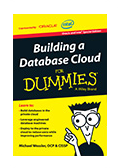As part of the Supply Chain Management: Beyond the Horizon research project, faculty and staff from the Eli Broad College of Business at Michigan State University conducted in-depth interviews with a number of organizations to gain insights into the development and implementation of various supply chain strategies, practices, and processes.
The focus was intentionally on the future and on identifying what challenges are driving supply chain decisions in the current environment. The following report summarizes key findings from our investigation of supply chain complexity and risk management obtained during our visit to VF Corporation.
BACKGROUND
VF Corporation is a global branded apparel company that focuses on lifestyle clothing, footwear, and accessories. Since its inception in 1899 as a glove and mitten manufacturer, the firm has grown, diversified, and reinvented itself multiple times. Today, its 30 brands are organized into five coalitions or loose confederations that include outdoor and action sports, jeanswear, imagewear, sportswear, and contemporary brands. The firm has approximately 64,000 employees, sales of $12.4 billion (2015), and a consistent track record of annual sales and earnings growth. The firm is highly diversified across brands, products, distribution channels, and geographies, which provides a strong competitive advantage relative to single- brand competitors.
Because of its focus on lifestyle brands, the firm must remain focused on its consumers and their evolving behaviors and preferences. The firm has four key components in its business strategy:
- Lead in innovation (drive new products and new technologies to support evolving consumer needs and tastes)
- Connect with consumers (engage consumers in new and meaningful ways)
- Serve consumers directly (reach consumers across multiple channels, wherever and whenever they want)
- Expand geographically (take advantage of scale to reduce risk and drive competitive advantage)
Read more at Supply Chain Complexity and Risk Management
What do you think about this topic? Share your comments below and subscribe us to get updates.




































